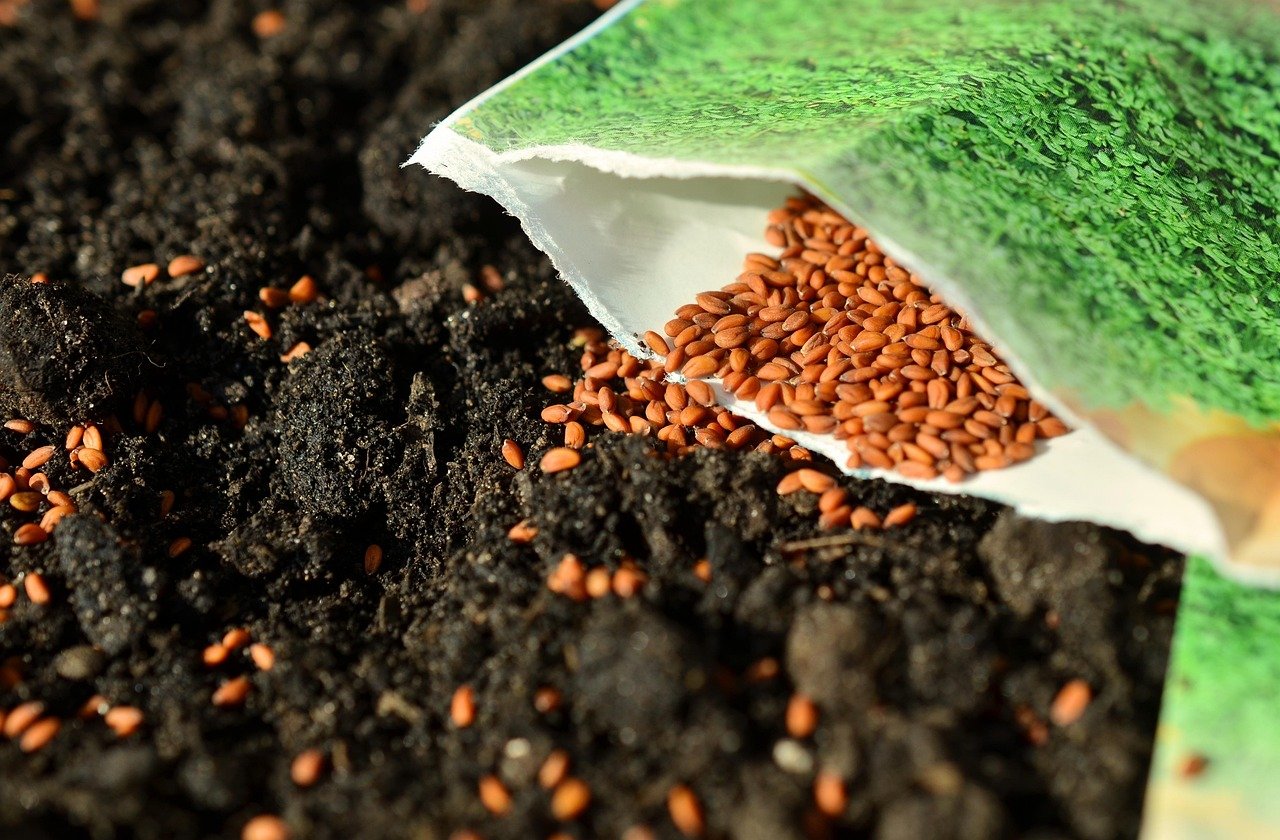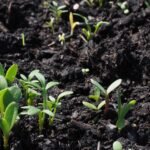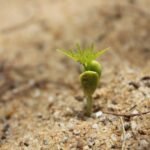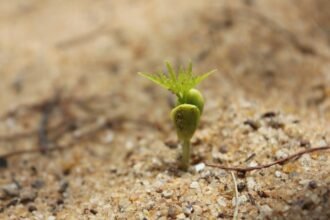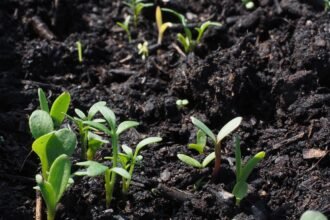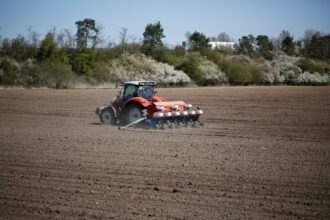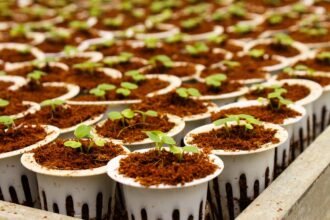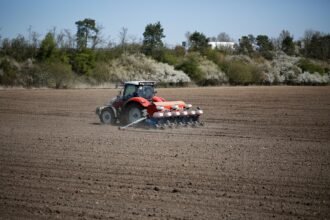Sowing seeds is the starting point of every garden, and the techniques used can vary significantly depending on the type of plant you’re growing. Understanding how to properly sow seeds for different plants ensures better germination rates, healthier seedlings, and ultimately, a thriving garden. From tiny herbs to large vegetables, each plant has unique requirements for the sowing process.
In this guide, we’ll cover the key techniques for sowing seeds for various plant types to help you succeed, whether you’re growing flowers, vegetables, or herbs.
1. General Seed Sowing Tips
Before diving into the specifics, it’s essential to understand some general techniques that apply to most types of seeds:
- Soil Preparation: Ensure your soil is loose, well-draining, and nutrient-rich. Use a fine seed-starting mix for small seeds and amend garden soil for larger seeds.
- Watering: Keep the soil consistently moist but not soaking wet. Water gently using a fine mist or watering can with a rose to avoid disturbing the seeds.
- Temperature and Light: Most seeds need warmth to germinate (typically between 65-75°F or 18-24°C). Additionally, provide adequate light, either from the sun or using grow lights for indoor sowing.
- Spacing: Follow the seed packet instructions on spacing to avoid overcrowding, which can stunt growth and lead to competition for water and nutrients.
2. Sowing Tiny Seeds (Flowers, Herbs, and Leafy Greens)
Small seeds, such as those from flowers, herbs, or leafy greens, require special care because they can be easily overwhelmed by dense soil. Here’s how to sow tiny seeds successfully:
Techniques for Small Seeds:
- Surface Sowing: For very small seeds (such as basil, lettuce, or marigolds), it’s best to scatter them evenly across the surface of the soil and gently press them down with a flat board or your hand to ensure good seed-to-soil contact. Do not bury them too deep—most small seeds need light to germinate.
- Use a Light Seed-Starting Mix: A light, fine-textured seed-starting mix is ideal because it won’t compact and suffocate tiny roots.
- Mist for Moisture: Since small seeds are delicate, use a fine mist to water them to avoid washing them away. Mist regularly to keep the surface moist until the seeds germinate.
- Thin Once Sprouted: Once your seedlings are big enough, thin them out to ensure that the remaining plants have enough room to grow and access resources.
Examples of Small Seeds:
- Flowers: Marigolds, Petunias, and Pansies
- Herbs: Basil, Parsley, Cilantro
- Leafy Greens: Lettuce, Spinach, Arugula
3. Sowing Medium-Sized Seeds (Vegetables like Peas, Beans, and Cucumbers)
Medium-sized seeds, such as those from peas, beans, or cucumbers, are easier to handle than tiny seeds and can be buried at a greater depth. These seeds typically require more space to grow, so proper spacing is critical.
Techniques for Medium Seeds:
- Plant at the Correct Depth: Medium-sized seeds should be sown 1/2 to 1 inch (1.25 to 2.5 cm) deep in the soil. For seeds like beans or peas, plant them slightly deeper, around 1 inch, to give them a good start.
- Use a Larger Tray or Row: For vegetables like cucumbers or peas, plant seeds in a row or individual cells in seed trays, ensuring adequate space between each seed.
- Water Gently: After sowing, water thoroughly to settle the soil around the seeds. As they begin to sprout, continue watering as needed, ensuring the soil remains moist but not waterlogged.
Examples of Medium Seeds:
- Vegetables: Peas, Beans, Cucumbers, Carrots, and Radishes
- Flowers: Sunflowers, Zinnias, and Marigolds
4. Sowing Large Seeds (Squash, Pumpkins, and Corn)
Larger seeds, such as those from squash, pumpkins, or corn, need more space to grow and can be planted at greater depths than smaller seeds. These seeds typically require more attention to their planting depth and soil conditions.
Techniques for Large Seeds:
- Plant Deeply: Large seeds should be planted 1 to 2 inches deep, depending on the seed size. For corn and squash, 2 inches deep is usually ideal.
- Spacing Is Key: Ensure there is plenty of space between each seed—at least 6 to 12 inches for squash or pumpkins, and about 12 inches for corn. Proper spacing helps the plants grow without competition for sunlight and nutrients.
- Use a Loamy Soil Mix: Large seeds, especially those like squash and pumpkins, prefer rich, loamy soil. Make sure your soil is well-draining but can also retain enough moisture to support large, thirsty plants.
- Provide Adequate Light and Heat: Large seeds like warmth. If sowing indoors, ensure they get plenty of light (or use grow lights) and keep the temperature between 70-80°F (21-27°C) for optimal germination.
Examples of Large Seeds:
- Vegetables: Squash, Pumpkins, Corn, Melons
- Flowers: Sunflowers, Dahlias
5. Sowing Seeds Indoors vs Outdoors
Some plants are best started indoors, while others can be directly sown outdoors. Understanding when and how to sow your seeds is crucial for success.
Indoor Sowing:
- Why It’s Done: Starting seeds indoors gives them a head start before the outdoor growing season begins. This is ideal for plants with a long growing season or those that need a warm environment to germinate.
- Techniques: Use seed trays, pots, or biodegradable peat pots filled with seed-starting mix. Place the pots under grow lights or in a sunny window. Maintain temperatures of 65-75°F (18-24°C) and ensure proper humidity.
- Examples: Tomatoes, Peppers, and Eggplant.
Outdoor Sowing:
- Why It’s Done: Outdoor sowing is suitable for hardy plants that can tolerate cooler weather and those with short growing seasons. It’s also convenient for crops that are directly seeded in their final location.
- Techniques: Prepare your garden bed by loosening the soil and adding compost. Follow the recommended depth and spacing instructions for the seeds you’re sowing.
- Examples: Beans, Carrots, Radishes, and Lettuce.
6. Sowing in Containers or Raised Beds
If you don’t have access to traditional garden space, sowing seeds in containers or raised beds is an excellent alternative. The techniques for sowing in containers are similar to those for in-ground planting, but with a few key differences:
Techniques for Container Sowing:
- Drainage Is Crucial: Ensure your container has adequate drainage holes to prevent water from accumulating, which can lead to root rot.
- Use the Right Mix: For containers, use a well-draining potting mix or a seed-starting mix, rather than garden soil, which can become compacted and heavy in containers.
- Water Carefully: Containers dry out faster than garden beds, so keep an eye on soil moisture and water regularly, but avoid over-watering.
Conclusion
Understanding how to sow seeds correctly for different types of plants is essential for healthy growth and successful gardening. By following the right techniques for each plant—whether it’s tiny herbs, medium-sized vegetables, or large seeds like pumpkins—you create the ideal environment for germination and development. Remember, each plant type has unique requirements, but with the right knowledge and care, you’ll soon see your efforts sprout into a thriving garden. Happy sowing!

